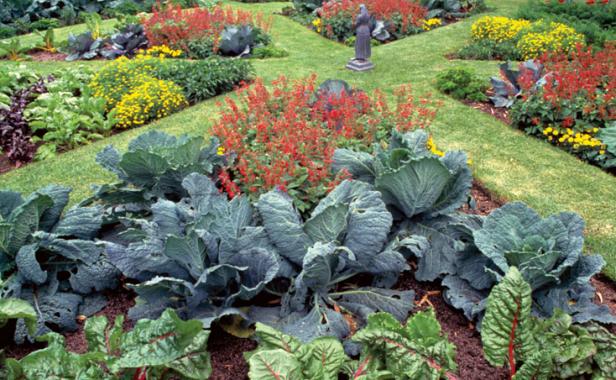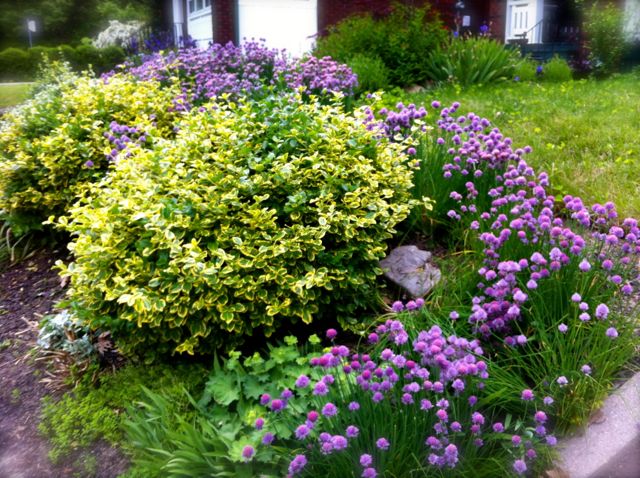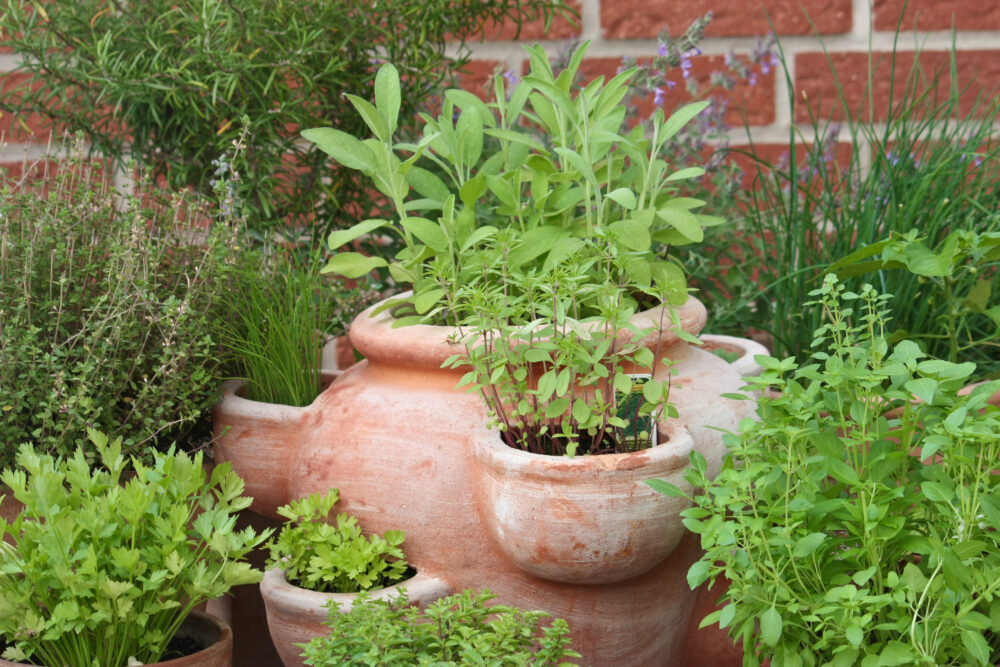Foodscaping is Not Your Grandmother’s Vegetable Garden
- 2022-05-02
- By mkirk
- Posted in Horticulture, The Garden Buzz
By Judy Kunz, Colorado Master Gardener

It’s a gardening method that has been enjoying a revival in recent years. The practice of integrating edible plants with ornamental plants, known today as foodscaping, is as old as the ancient Egyptians and Babylonians, who were known for combining ornamental trees, shrubs and fruit trees along with flower gardens and edible crops. It wasn’t until the Renaissance period that Europeans started separating ornamental gardens and food gardens.
At a time when there is seemingly no end in sight for skyrocketing food prices, growing one’s own fruit, vegetables and herbs makes sense from a financial perspective. While expanding existing ornamental gardens to include edible plants and replacing existing turf with a food garden border is not only a good choice environmentally, it can also be a money saver from the standpoint of reducing water consumption and eliminating the cost of fuel, fertilizer and pesticide associated with lawn maintenance. In addition, a perennial garden with a border of greens, squash and edible flowers, for example, can be just a few steps away from the kitchen, virtually eliminating transportation and fuel costs from grower to retailer. What could be fresher, tastier and better for the environment?

Growing our own food can be immensely satisfying, connecting us to the earth and providing a certain amount of mild exercise. Also, most children delight at the chance to get their hands in the soil, and the learning experience from planting seed to harvesting is not only a great educational tool, it may also help to instill a life-long love of gardening. In addition, a diversity of plantings from roses to apple trees to carrots and beans will promote beneficial insect activity.
Herbs can be grown as annual, biennial or perennial borders and can also do well when planted in pots that are integrated into a flower garden space. Keep in mind that some tender perennial herbs like rosemary may need to be protected during the winter by being moved indoors.

For success, start simple. No need to plot out and prepare a large traditional vegetable garden. There are no rules. Try adding a border of herbs, lettuce or spinach to an existing flower garden or look for a sunny transition area between turf and ornamental garden to plant a few rows of radishes, chard and scallions along with vines and shrubs. Smaller tomato plants of the determinate type will add a splash of color while not overtaking the garden space. The area should receive at least six hours of direct sunlight and have well-draining soil. Vegetable, herb and small fruit choices are abundant and invite creative design ideas.
Why not pick up several seed packets on the next grocery store trip?
Horticulture Resources
- Garden Buzz Archives
- CSU Extension Resources
- Colorado Master Gardener Program
- Foothills to Plains Native Plant Master Program
- Native Bee Watch Community Science Program
- The Co-Hort Blog
- PlantTalk Colorado
- Soil Testing
- Plant Select
- Emerald Ash Borer
- Japanese Beetle
- Colorado State Forest Service
- Ask an Expert


